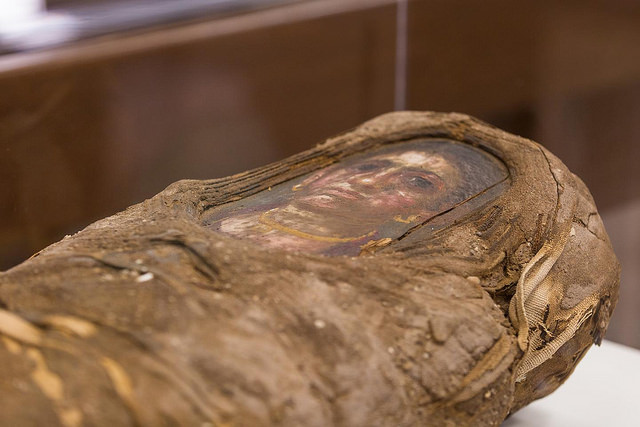Scientists have used modern technology to discover the secrets of a 1,900-year-old mummy of a little girl.
 The girl died in Egypt all those years ago and was mummified and placed in a coffin. The face of the coffin contains another face, part of an extremely lifelike painting of the girl inside. It is one of a few hundred portrait mummies found in the country. They offer a glimpse into a brief window in time. The first such painting appeared in the 1st Century A.D., in Roman times; and the practice had disappeared just a few centuries later. The far more prevalent practice was to create an idealized image of the deceased, such as the golden mask of King Tutankamen.
The girl died in Egypt all those years ago and was mummified and placed in a coffin. The face of the coffin contains another face, part of an extremely lifelike painting of the girl inside. It is one of a few hundred portrait mummies found in the country. They offer a glimpse into a brief window in time. The first such painting appeared in the 1st Century A.D., in Roman times; and the practice had disappeared just a few centuries later. The far more prevalent practice was to create an idealized image of the deceased, such as the golden mask of King Tutankamen.
Archaeologists discovered the mummy in 1911 in an underground chamber that also housed four other mummies, at a place known as Hawara, in the Fayoum. Earlier excavations at the site, led by William Flinders Petrie, had found other portrait mummies; mentions of these "Fayoum portraits" sometimes appear in Roman history textbooks.
The scientists, from Northwestern University, used a particle accelerator at the nearby Argonne National Laboratory to conduct an X-ray scattering experiment, the first such procedure done on a human mummy. The X-ray beam was tiny, about twice the diameter of a human hair.
In August, the scientists had also used equipment at Northwestern Memorial Hospital to conduct a CT scan of the mummy; that scan gave the scientists enough information to conclude that the girl was 5 when she died and that she was probably from a well-to-do family.
Both procedures gave the scientists information about the mummy without disturbing the wrappings. The scientists are particularly interested in the bone structure of the girl; initial findings suggest that she died of a disease, possibly malaria or smallpox. The scans might also show what objects were included in the wrappings. The Ancient Egyptians often sent the deceased off to the afterlife with items that were familiar to them in life.
Complete results are expected in January, when an exhibit on portrait mummies opens at a Northwestern museum.